//the process

//Nov. 30 - Almost finished
The project is at a solid "proof of concept" phase. The data collection was a little shaky, and I would like to get some nice documentation on Thursday. Next Friday I defend my thesis. The paper needs a couple more things and some formatting fixes, and it shoud be ready to send by Friday.
Here's some documentation of the playtesting!

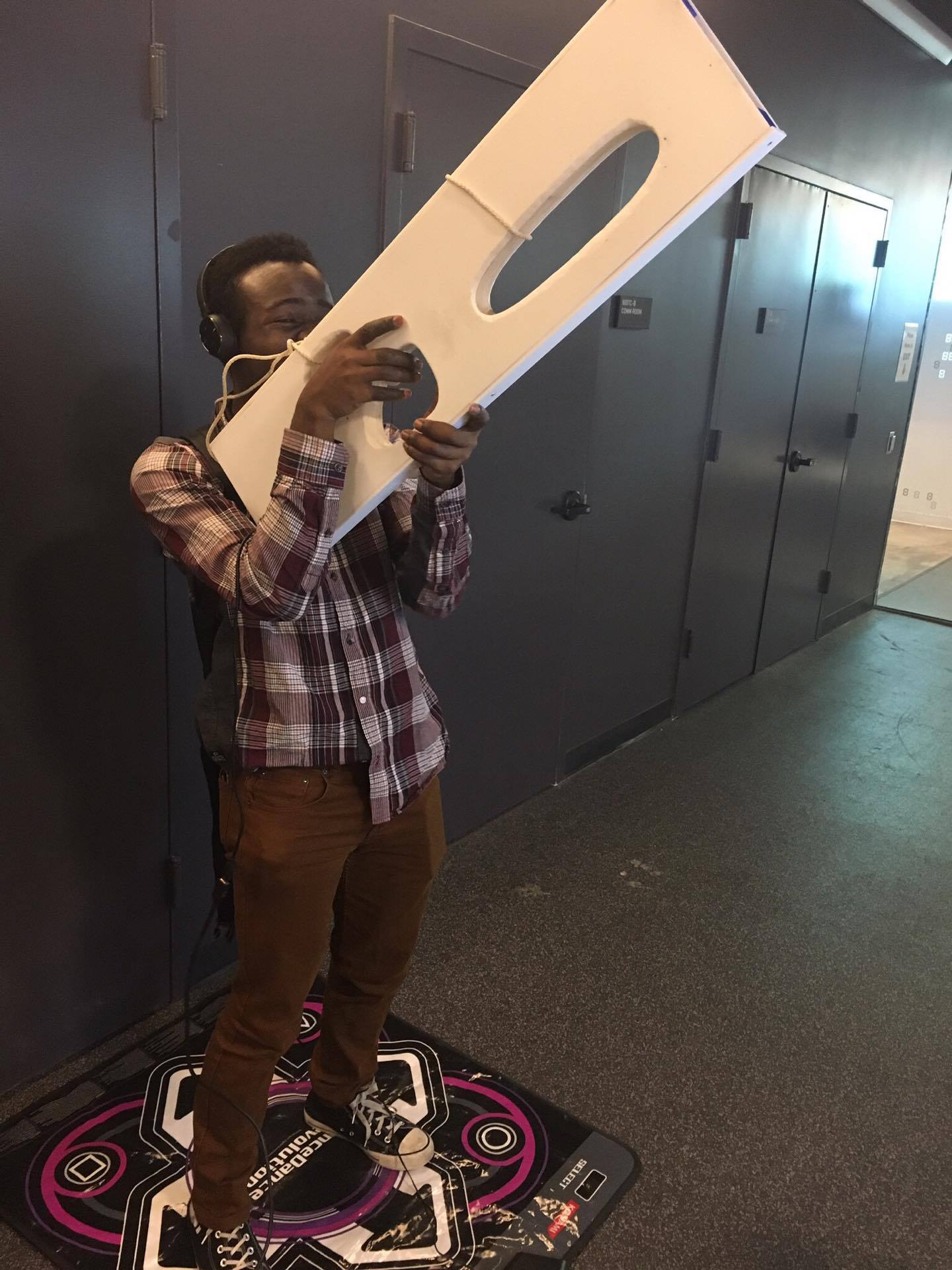
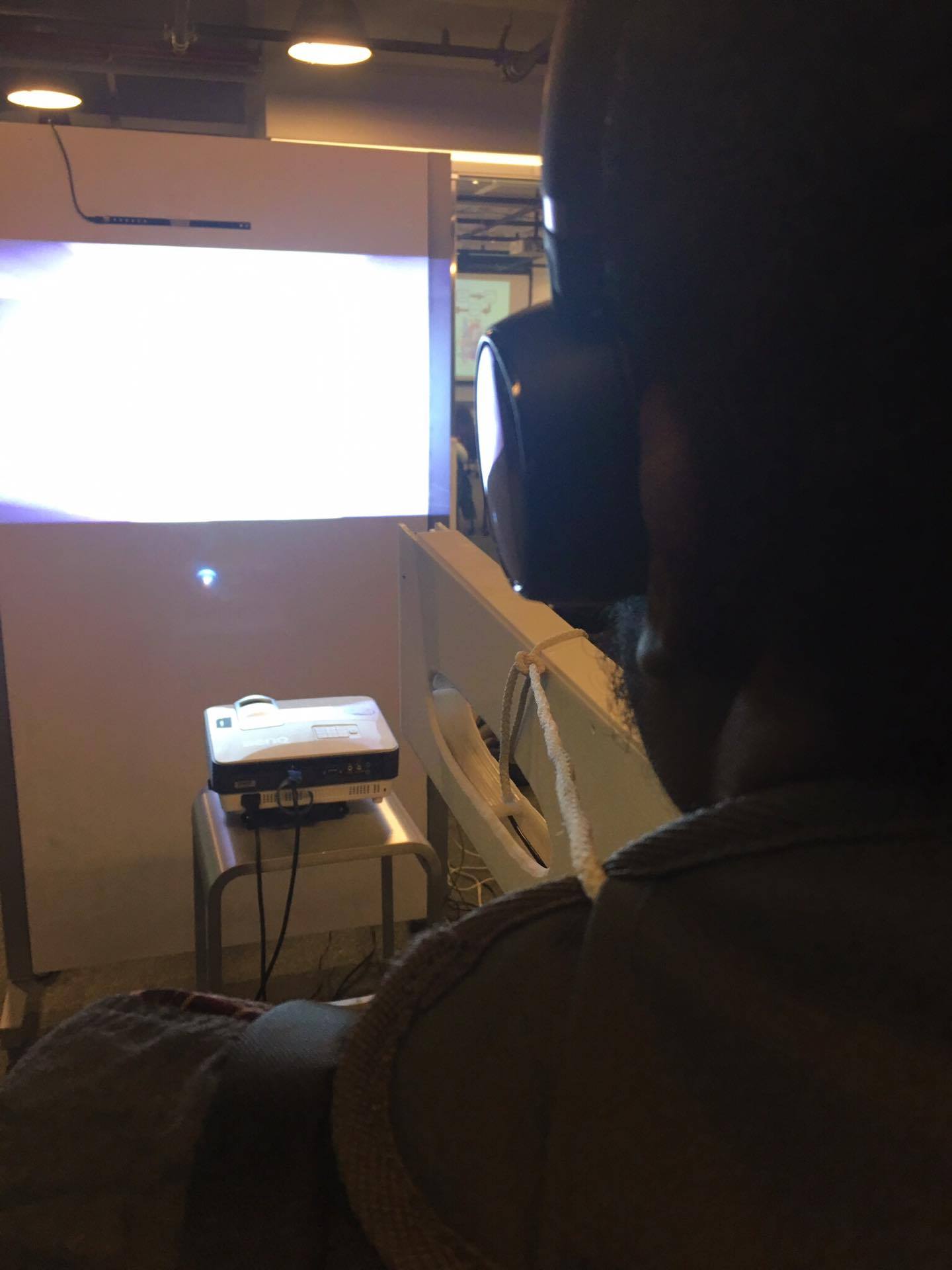
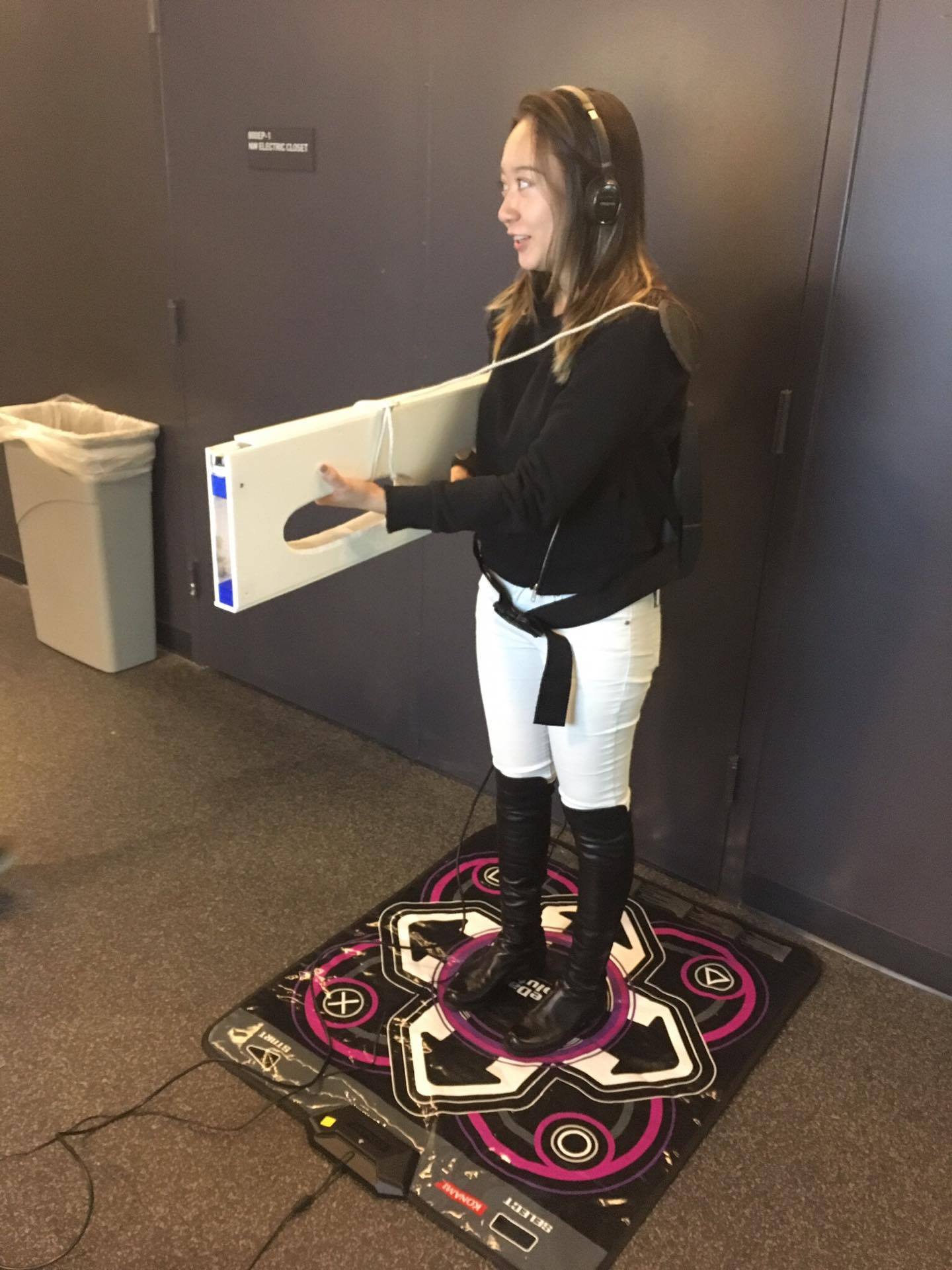
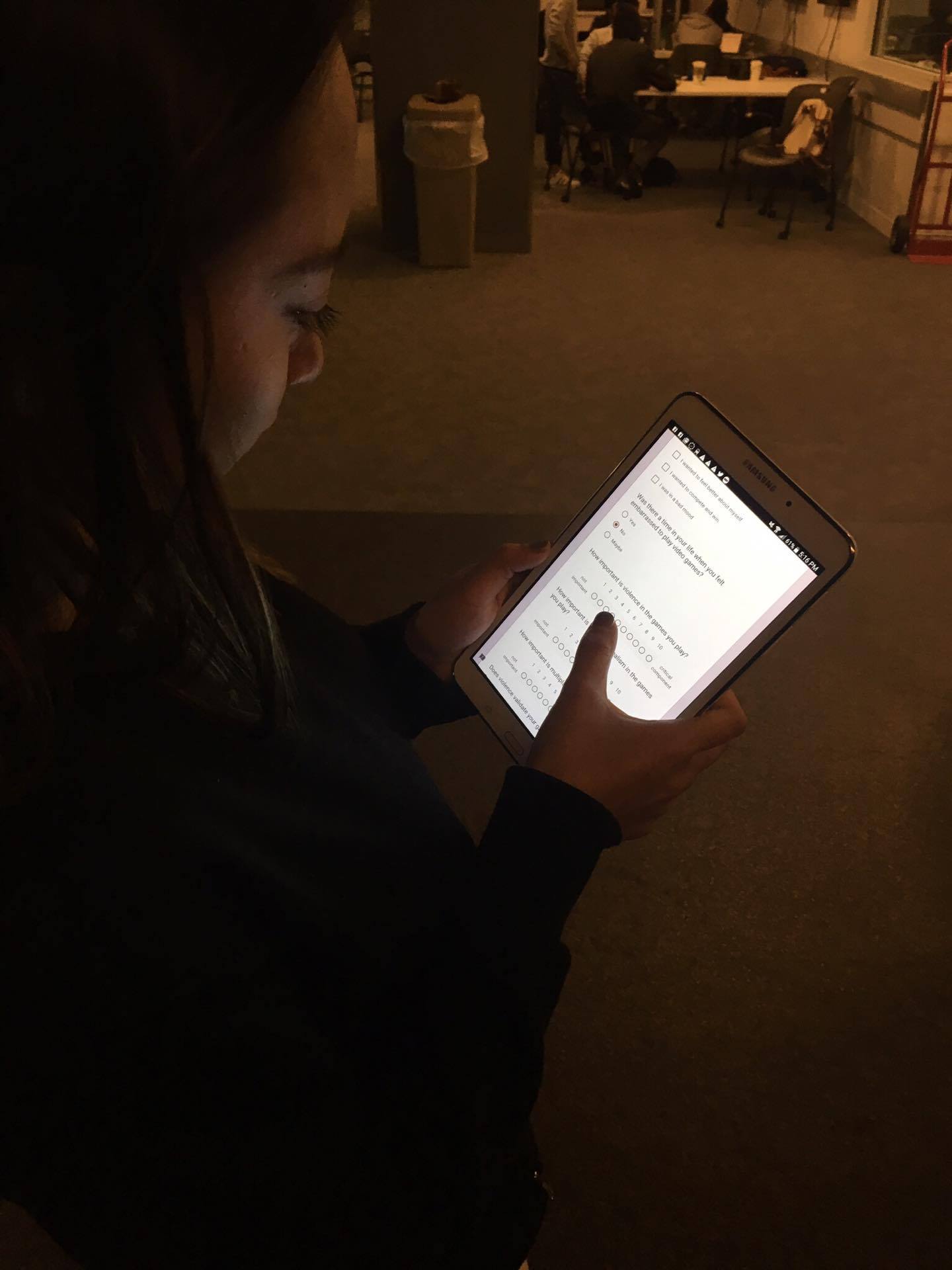
//Nov. 19 - Game finished
The game is finally done to a point where I would feel comfortable to begin having people play it and gather data for the paper. I also think I settled on a title. I held the controller, waiting for the game to load, and it felt like I was getting ready to play Guitar Hero, which has many similar implications as my game. It seems fitting.
Here's a video proving its functionality, just in case everything catches on fire or gets stolen by lizard people.
And here's a picture of the whole setup for good measure.
//Nov. 9 - Almost finished with game and controller, wrote abstract
As I approach my self-imposed deadline, I am almost ready to begin the first round of user testing, and I am optimistically predicting I can start tomorrow. The controller has been reassembled. It is not my intended vision, but it is what it is and it works.
Here is a demo of the game in its current state. It's only missing the final Level 5 and some slight polishing. Level 5 should be completed today, the polish will happen as I get closer to December.
I wrote an abstract based on my pre-game-testing research so far. Abstract draft #1 PDF
//Nov. 2 - Worked on paper and got pulse oximeter to talk to computer
I did some more research on my paper and added a couple case studies. The only exciting thing this week was getting my pulse oximeter to correctly send data to a custom application I wrote. The next step is to integrate this app with my game so it can record a player's heart rate it sync with game time, providing more acurate measurements.
//Oct. 26 - Game mechanics complete(ish), controller almost done and midterm reflection
The game for my project, probably the most difficult and time-consuming aspect of the project, has been neglected and needed some attention. I decided to focus on getting the gae done so I would not worry about in November, which should be the critical time for running the game with different people. I finished constructing the fundamental game mechanics, which includes an AI that controls the bots to pursue and shoot at the player when it sees the player, some simple path-finding for the AI, a damage system for the player and bots, animation controllers, and a method to swap the models around. My thesis advisor recommended I use a tested and proven effective map for an FPS instead of trying to make my own from scratch, so I created a game map based on the popular de_dust2 map from Counter Strike: Source.
The game has several obvious glithces, but I believe my paper and getting the game completed and playable should have a higher priority than making a 90% polished game. The animations don't sync with the bots' movement speed very well, and there is no animation in place for when a bot turns. Also the bots, if killed while moving toward the player, will continue to move towards their most recent way point even though they should stop where they were killed. The animation problem is a matter of taking the time to get proper animations and to sync the animation speeds to the bot's movement speed, which would be simple to do if I was an experienced animator, whch unfortunately I am not. The movement issue is due to my very simple method of bot pathfinding, and making it any more accurate would take some time away from other aspects of the project. So far these two errors have not detracted from the overall experience.
The second most difficult obstacle is my controller. After getting the game to its current state, I tried to make a siginificant step forward in the controller consturction. I tested the electronics and they work. I laser cut all of the physical parts for the controller and glued some together last night. Today I should have the electronics integrated into the assembled controller and ready for use with the game.
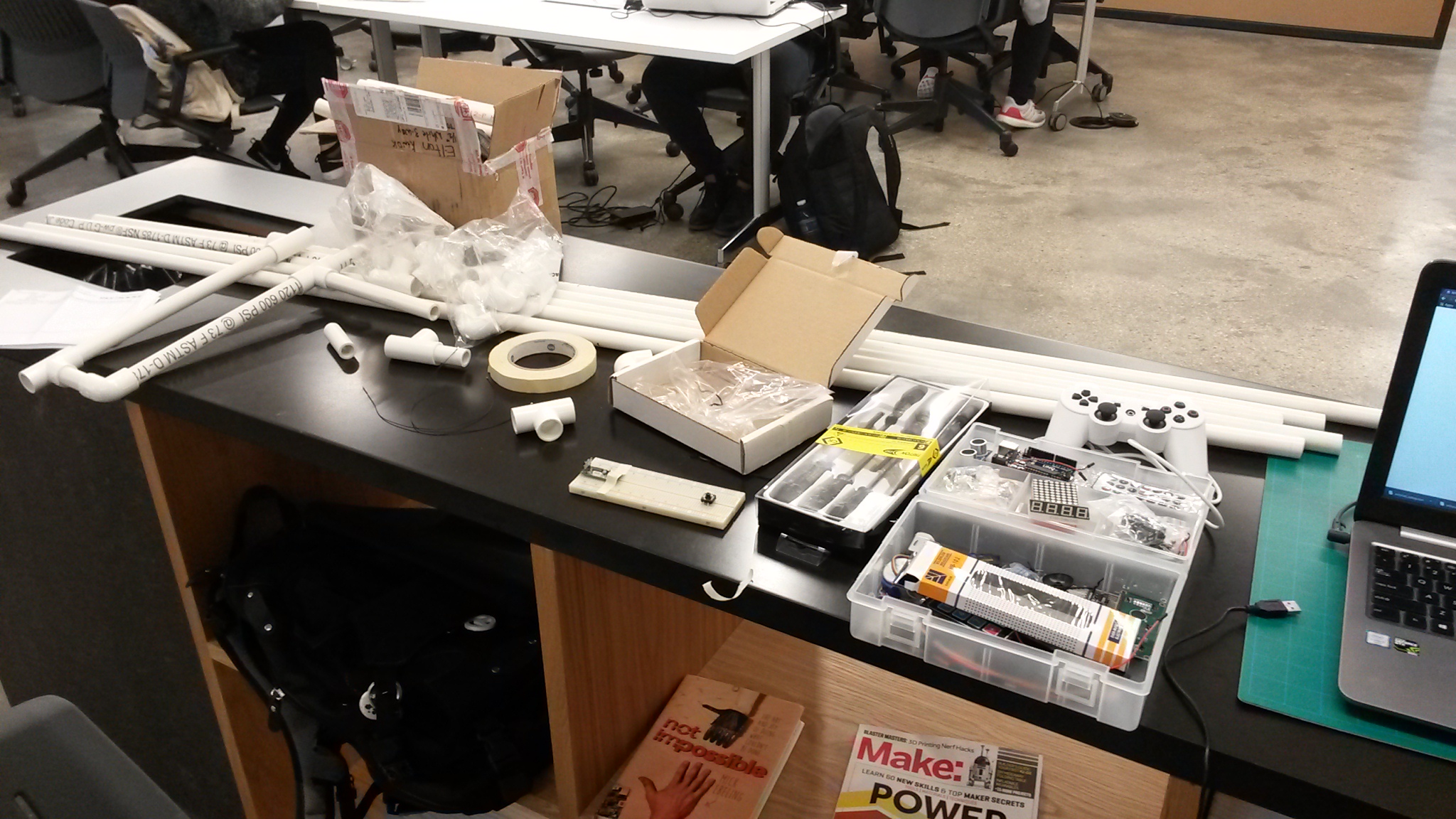
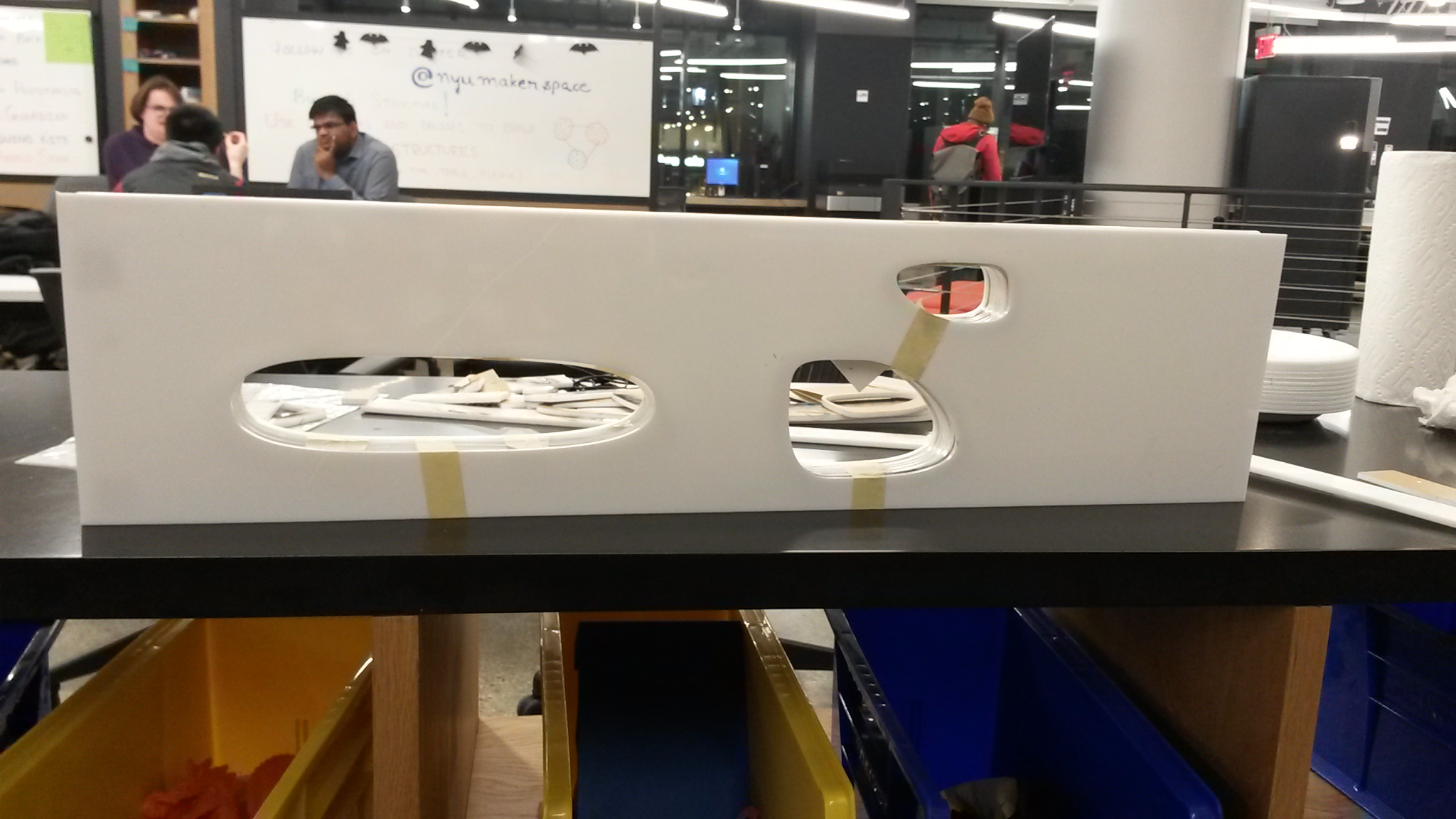
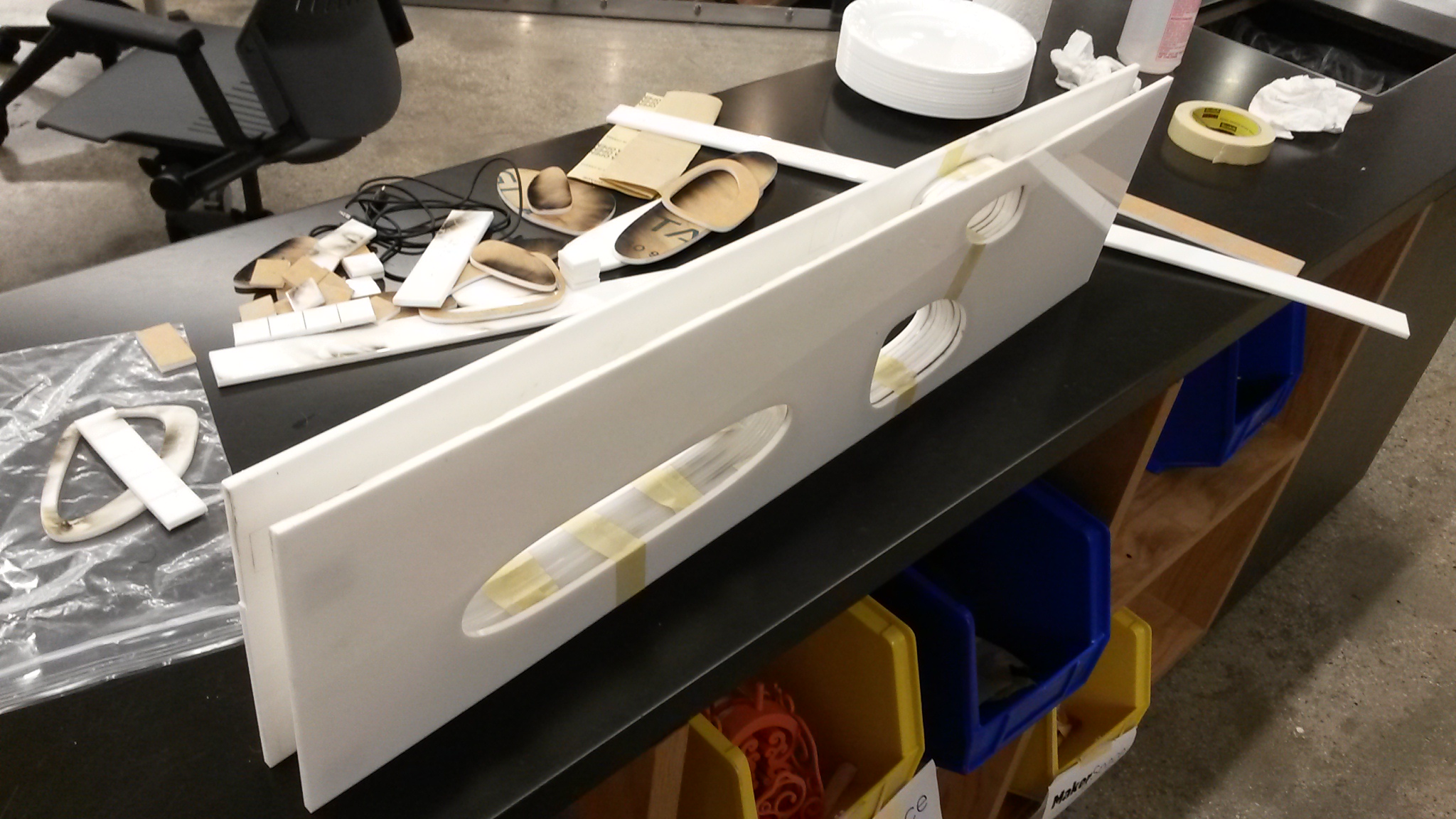
Midterm Reflection
Where are you in your writing process? How much is left to accomplish before the end of November?
I have several large holes in the paper that need to be filled. A large chunk of the history and background section, beginning with Shakespearean dramas and ending with the Peace of Westphalia, needs to be researched and planned out better. Also I need better citations for the background section, as most of the information currently is based on the referenced works (The Odyssey, Beowulf, etc) and should include some interpretations other than my own. I have citations ready to go for the other sections in the paper, I just need to put them in. The last half of the paper, including analysis of case studies, has yet to be seriously written beyond a sparse outline. The description and construction of my project has not changed since last semester, so that section should be pretty easy to polish up. I still need to get results from playing the game, so naturally the section about the results is currently empty. For a more organized perspective on what's remaining on my paper, here's a bulleted list:
- Get citations throughout
- Finish background and history section
- Write references to the five case studies
- Flesh out non-FPS-game background section
- Finish breakdown of FPS mechanics
- Polish section about the project description and construction
- Get and write about results of people playing the game
How is your project developing? What is left to do for the final version? What is your timeline?
- 10/28: Finish post-game survey
- 10/30: Have game done and playable
- 10/31: Begin running game at Tandon MakerSpace
- 11/3: Begin first round of Playtest Thursday running of game at MAGNET
- post 11/3: assess problems with game testing, fix them, run again
- 11/16: Personal deadline to have game plays done
- 11/24: Have results written up and put into paper
How will you demonstrate your thesis statement with your research/practice/project in your defense?
My game play results will indicate how violence in a game affects players emotionally, physically, and mentally via the surveys, pulse oximeter readings, and game performance scores, respectively, and how these values change as the player experiences different levels of violence. If my historical and case-study research are correct, players should have better performance in the game and their body should become more engaged in a game when more violent content is present. How a player feels about violence in games, however, will likely depend on the player's current relationship with violence, e.g. are they a part of an oppressed group, or have they experience domestic violence in real life? My defense will thoroughly present my findings from running the game and the research, and show how the two mesh together. The academic research will show how violence has played a critical part in defining entertainment and play for thousands of years. This cultural primer for accepting violence as a source of "fun" led the way to the dominance the first person shooter genre has maintained on the video game market, which indicates two fundamental desires of contemporary gamers: a ludic representation of warfare, that is, a competition between two or more equally capable contenders in games of life-or-death, and an opportunity to feel authentic experiences, which, while not universally true, is satisfied with representations of violent situations. My desk research has show this, and my game runs will likely show something similar.
Who are you and your thesis advisor considering as your external examiner?
My thesis advisor, Dr. Fernández-Vara, recommended I show my game at one of the several game meetups around the city and start a conversation there. Likely someone will express interest in being an external examiner. At a meeting I had at the company I'm interning for, Local Projects, I had three people express interest in being my external examiner.
//Oct. 19 - Project prototype and more paper progress
I made a decent step forward in my project by assembling a rough working-version of my controller and an interface for it. Using Unreal Engine, I made a small "game" that shows that the fundamental mechanics of what I want to accomplish is doable by the end of the term. I have a system in place where all I really need to do is "fill in the blanks" with content. The last mechanical hurdles I need to jump is the data recording and biometrics, the latter which should not be much of a problem. I plan on doing the graphing and such in post, not from Unreal. I could easily write a script that exports recorded data as a CSV file and then write a script in something like p5.js or Processing to graph the data to be seen by the participant. The biometrics may be a small obstacle, simply because I have no experience with the sensors. But I know a lot of people who have worked with heart pulse sensors, so I'm sure it can be done.
Here's a short video of my controller prototype.
Pictures will be posted shortly
The second draft of my intro is here: Intro draft #2 PDF
//Oct. 12 - Body of paper 2nd draft, intro 1st draft, and parts ordered
This week I committed to buying some parts so I can hopefully have some kind of prototype ready by next week. I also wrote another draft o the paper. Keep in mind that it has more relevent content than last week's draft, but the formatting is a bit all over the place. Body draft #2 PDF
I also made an introduction. Intro draft #1 PDF
//Oct. 5 - Plans for controller, body of paper
This week I started actively looking for potential technologies to use in my gun controller. I now want to emphasize the immersive aspects of a violent video game, and to really push that message the player needs to hold something that feels like a gun. I want it to have a somewhat generic yet tasteful shape, like a minimalist sculpture, so the outward aesthetic is not to prioritize a realistic depiction of a weapon or anything remotely close to celebration of firearms, instead the controller is serve as the single unifying symbol of my project. To look at it it evokes other feelings than to hold it. It will have a certain heft to it. When experienced with VR, it will then have the functionality of a deadly firearm. But in real life, it is what it is: a simple object.
Although I have my vision for such a controller, making it work will be tricky. I wanted to sit down and decide upon technology before today so I can begin working on the controller right away, since at the moment it is the critical component of the piece. The primary challenge of the controller is accurate and believable aiming, that is, the controller will translate the actions of the player realistically into the game space as if the gun controller were a real firearm. This functionality is not new and has been accomplished before at various levels of effectiveness; what I need to do is satisfy the following requirements:
- it's reliable
- it's accurate and believable
- I can afford it
- I have enough time to make it
The following are my considerations for the controller technology:
Traditional light gun game technology
I looked into how old light gun games worked, like Duck Hunt for the NES. The technology was pretty straight forward: diode in tip of gun tells computer if it sees the bright white outline of a target at the instant the trigger is pulled, which indicates the gun was aimed correctly and the target was successfully “hit.” Unfortunately, this only works with old CRT monitors, which I could not find in the size I would want. The aimable area, if I am to do full 360 degree VR, needs to be on all sides of the player. This simply cannot be done with CRT monitors.
I did, however, found this little guy. I like idea of using this in case I run out of time, since it has most of the features I want. But it suffers from the same issues as the next technology options ...
Playstation Move and WiiMotes
I first considered these input devices because of their very accessible price. I wouldn’t be afraid to disassemble and tinker with these controllers to suit my needs because I could get another one in case I irreparably destroy one. Also I have heard high praise for Playstation Move controllers and how easy they are to integrate with Unity.
However, after watching several demos and personally testing them in first-person shooter games, I found their performance lacking. The aiming drifts, and it’s impossible to actually aim down the sights or the gun, instead a reticule moves around the screen to indicate the general direction your controller is pointing. Also moving around the space throws off the calibration, which would break immersion.
Custom infrared setup
Discussing my controller problem at the Makerspace, I came to a potential, yet ambitious solution. Apply the same technique of the light gun game, only instead of a screen have several infrared emitters placed on the walls of an empty room and a camera on the controller. Using computer vision, I could detect where the gun was aiming by the IR pattern detected by the camera. The graphics of the game could then be projected onto the four walls of the room, or use a VR head mounted display.
The immediate problem of this is practicality. It would be hard for me to acquire an empty room with four white walls for an extended period of time. Also I do not have enough time to make an algorithm and a hardware system that would power a gun controller more accurate than off-the-shelf controllers that have gone through years of development.
HTC Vive
I return to current standard in full-room consumer VR tracking tech. I watched some demos of FPS games using the Vive, and color me impressed. Players actually looked down sights, the projectiles traveled where the player aimed, and no floaty reticules required (with some exceptions). I was really blown away by the Hot Dogs, Horseshoes, and Hand Grenades and Onward demos.
Onward
HHH
Of course my game would not have to be this complex, because I only need one gun, no multiplayer, and one game mode. Also you should never be able to drop or change guns, so that’s something that can be ignored. The aiming looks accurate, the interaction looks believable, and the implementation is certainly doable on my timeframe, so the Vive is the best option in these three regards.
The only issue with the Vive right now is how I may access it. I’m sure I can request access to the Vive set up in the MOCAP lab in MAGNET, but I would like to be able to disassemble one of the controllers, and I’m having a hard time finding individual controllers for sale. So my controller would have to be function as an add-on to the existing Vive controller and not a fully integrated controller. Also my rapid-iteration style of code development will be less effective when I have limited time with the Vive, so it looks like I would have to have solid chunks of game and controller design done outside of the lab and pray that my work magically works in the time I have to use the Vive. Either that or I throw $1000 at the problem and have my own Vive to use at home.
Regardless, I think I will push forward making a Vive game with a controller that functions as an add-on to the existing Vive controllers.
Paper Body
Here is a link to my paper in-progress. Body draft #1 PDF
//Sept. 28 - Research for paper, research for product
I wrapped up two of my side projects this week and can now devote more time to the thesis. I broke into a new book, titled War/Play by John Martino, which investiages the development of video games alongside the militarization of society. The chapter I'm currently on has an interesting discourse about "acceleration of history" -- the rate at which drastic changes in technology and culture develop -- and how such acceleration affects the generation of youth raised on digital media. The author and several others he quoted talk about how the formation of identity in early life draws inspiration from experience, and how post-war society replaced these early-life experiences with a notion of "youth," a time spent not on hardship and citizenship but on consuming media and material goods. As the evolution of media accelerates at an alarming rate due to digital production, media becomes ever more effective in defining the identity of young people, which may transfer carry over into adulthood. This avenue of thought intrigues me. I developed a concern for this kind of phenomenon recently, when I realized how often people define their identity by the media they consume. Now granted people who produly proclaim "I'm a Trekkie" or a member of a similar subculture closely associated with a work of fiction are far from the majority, nevertheless the preponderance of these subcultures shows how passion for fantasy can become a definitive part of some people's day-to-day life.
As for the product for my thesis, I continued to look into what I could accomplish with Unreal Editor 4 in a realistic amount of time. Most assets I could potentially aquire from other 3D games if I do not have the time to model them myself. Next I want to see how plausible a handheld gun controller is for the game. I really want to push immersion with this product, and in order to do that the controller must transcend the joystick and be closer to the real thing. I have an idea that would use a Playstation Move controller embedded into a prop, and make a light-gun arcade game of sorts. This will require some experimentation, but I believe the Playstation Move controller will be much, much easier to implement than something more complex like accelerometers and gyroscopes.
//Sept. 21 - New Thesis statement and paper outline
This week I started organizing my thoughts into an outline for my paper. The outline in this state is based partly on my paper from last semester and the new information I discovered during my summer research. A link to my outline can be found here.
I also revised my thesis statement:
Violence in video games improves player performance and enhances virtual fulfilment of fundamental psychological needs due to validation of fantasy play; however, forms of violence beyond a certain threshold of graphic nature and amoral purpose, especially when experienced in VR, reduce player performance and enjoyment due to negative emotional response and empathy for virtual entities.
I am still not 100 percent confident in this thesis statement, mostly because it's literally a bastardization of the two statements I made last week. I feel like my project has something to say about violence validating fantasy play, but I also really want to talk about how realism and immersion can make people feel genuine emotions for virtual entities. If players hesistate to "kill" entities in the game when the entity is rendered a particular way, but do not hesisitate when the entity looks another particular way, the game would indicate how the violence spectrum plays into empathy. Validation and empathy are two very interesting subjects that I find difficult to choose between!
//Sept. 14 - The Thesis Statement
This week I begin the final stretch for completing my thesis project. If you would like to see how I got to my current topic on the role of violence in immersive gaming, my pre-thesis blog is available here.
Over the summer, I came to two potential thesis statements. As you will see, each provokes a different agenda.
//Thesis Statement One------------------------------
Violent aesthetics in traditional immersive games enhance the fulfilment of fundamental psychological needs, thus virtual violence validates fantasy play and encourages the player to keep playing and perform better.
//Thesis Statement Two------------------------------
As immersive gaming technology and the believability of action improves, there will exist a violence threshold where the player's savage nature cannot overcome the pressures of morality, thus diminishing the pleasure of a game.
I would like to think more about what I want my project to say: will it be an advocate of violent video games, or a sobering look at human nature? The sooner I come to a decision, the better.